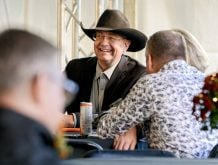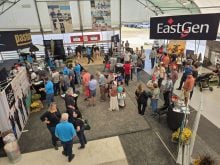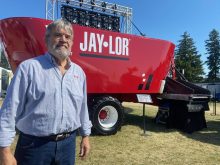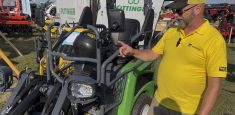A Noreaster took root at Discovery Farm Woodstock during Canada’s Outdoor Farm Show, and its on-farm potential could be electrifying.
The Smart Energy Company’s Noreaster micro solar system and “mini farm” shed, which houses the battery system, was a hit during the farm show’s “Off the Beaten Path” tour.
Why it matters: A micro solar system can be scaled to a farm’s operational needs and is small enough to fit where it won’t impede cropping.
Read Also
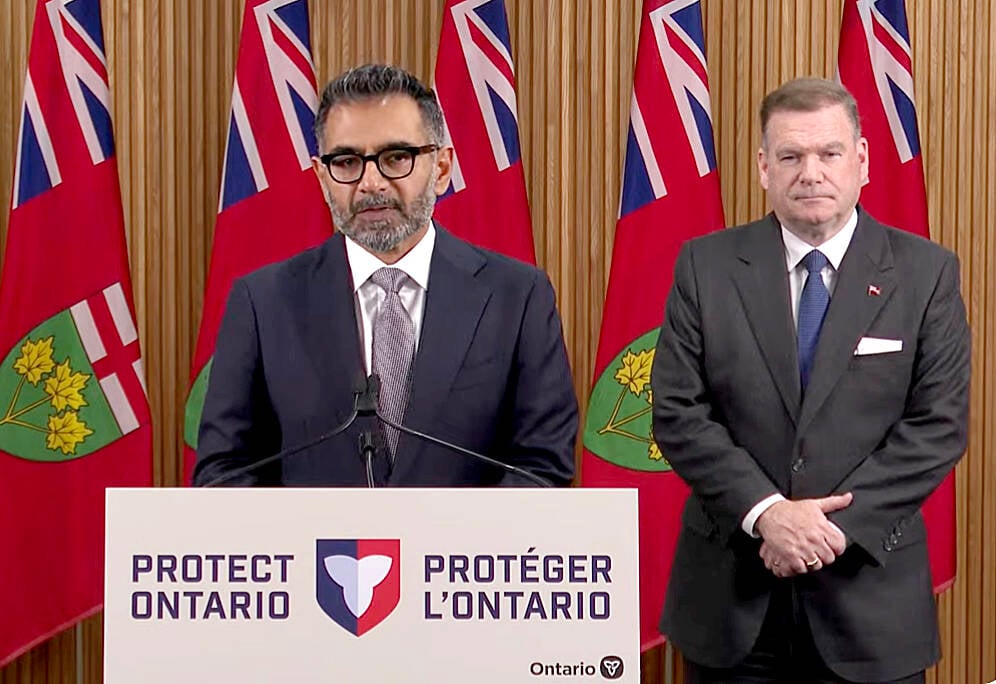
Conservation Authorities to be amalgamated
Ontario’s plan to amalgamate Conservation Authorities into large regional jurisdictions raises concerns that political influences will replace science-based decision-making, impacting flood management and community support.
Jeff McAloon, co-founder of The Smart Energy Company, said he was intrigued by research work at the Discovery Farm. The company is also a partner with McCain’s Farm of the Future research site in New Brunswick.
“It’s an exciting next step in our mission to help farmers shape and sustain their energy futures.”
McAloon said the single 32-foot-long 10 kilowatt Noreaster system provides power at three to four cents per kilowatt hour. Ontario hydro rates fluctuate between 8.7 and 18.2 cents per kilowatt hour. The Noreaster can easily supply a year’s worth of electricity for the average home, he added, and the system can be scaled to meet the energy needs of any size operation.
“This system is connected directly to your farm, and rather than produce revenue, it eliminates costs, so it reduces or in most cases eliminates the electricity bill that the farm receives,” said McAloon.
Pork producer Paul Oomen of Oomen Farms in Strathroy is installing eight Noreasters to power his hog operation. He’s open to hosting tours once the build is complete, said McAloon, but the Discovery Farm micro solar farm provides a biosecure, year-round accessible educational platform where producers and agriculture business can see the system.
McAloon added it’s geared for installation on sub-optimal parts of the farm, such as beside a barn or in field corners.
The do-it-yourself Noreaster kit costs approximately $25,000 and upwards of $30,000 when fully installed. Married with a battery system, costs are $50,000 to $60,000, with a return on investment of four to seven years on a system guaranteed for 50 years.
McAloon said people only rent electricity from the electric company, so investing in a solar micro-farm has an immediately better return on investment, even without incentives. The federal government recently passed a 30 per cent refundable tax credit for incorporated farm businesses, applicable to the Noreaster and the accompanying battery systems.
Clients can use any battery company, but McAloon said he prefers the Generac Power Cell product.
The Generac Power View App tracks how much energy the system creates, the battery capacity and credits from energy flowing to the grid. Additionally, the app can trigger battery power use during high-rate times and anticipate storm potential to ensure a full charge during an outage.
“Generac started in farming and we like the research and development and the investment they’re putting into the battery technology. It takes a lot less space and is more accessible to your average commercial client, like a farmer.”
Frank Cortese, Canadian Solar’s senior sales manager, said rising electricity costs and federal incentives increase interest in on-farm solar energy options.
“Farmers are all smart financially,” he said. “As their energy consumption and costs increase, they need to be able to reduce those costs.”
He explained that in 2008, a 200-watt solar panel was considered high power. Now, 700-watt solar panels are available and their efficiency and battery storage technology have increased.
“Solar is the lowest levelized cost of electricity in the world today. It beats out … nuclear, gas, anything else,” Cortese said. “Solar is the lowest, and it’s definitely more competitively priced with a complete installed system.”
Discovery Farm partnership
Brayden Bell, Discovery Farm Woodstock’s farm manager, said the Noreaster fits well with the farm’s partners and projects.
“They’re new, they’re innovative (and) they’re breaking into the market in a big way.”
Bell said the partnership broadens the farm’s scope of research and learning opportunities beyond crops, livestock and other ag-centric technologies, providing a “more whole-heart” approach.
The Smart Energy Company’s demonstration site allows potential clients and organizations to tour the facility to see how the system works and how it could fit into an operation, said Bell. It also increases Discovery Farm’s potential to reach net zero while building credits for the site.
“Right now, it is strictly just for demonstrating how solar energy can benefit the farm but as the partnership continues to grow, we’ll look at what else we can do with the system.”
Bell said there might be an opportunity for the Noreaster to offset power use during Canada’s Outdoor Farm Show or buildings within the grounds.





